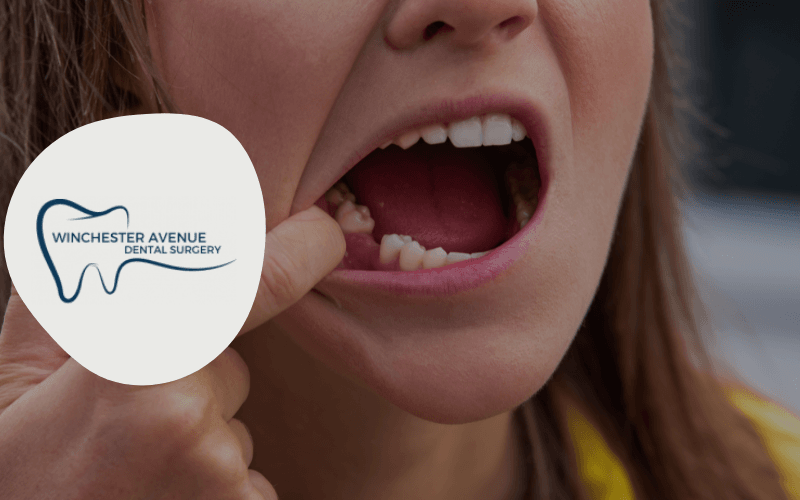How Long Does It Take for Pulled Tooth to Heal?
If you’ve recently had a tooth removed — or you’re preparing for an extraction — it’s completely normal to wonder how long does it take for pulled tooth to heal. Whether it’s a routine extraction or a result of a dental emergency, knowing what to expect during recovery can ease your worries and help you heal properly.At Winchester Avenue Dental Surgery in Leicester, we provide tooth extractions with care, precision, and support. In this guide, we’ll explain the healing process, what’s normal, and how to look after yourself following treatment.
Why would a tooth need to be pulled?
Tooth extraction may be needed for a number of reasons, including:- Severe decay or infection
- Gum disease causing loosening of the tooth
- Crowded teeth before orthodontic treatment
- Impacted wisdom teeth
- Dental trauma or breakage

How long does it take for pulled tooth to heal?
Generally, it takes around 1 to 2 weeks for the gum to begin healing after a tooth extraction. However, complete healing of the extraction site and underlying bone can take several weeks to a few months, depending on the complexity of the extraction and your overall health.If you’re wondering specifically how long does it take to heal a pulled tooth, here’s a general timeline:- First 24 hours: A blood clot forms at the extraction site — this is essential for healing
- 2 to 3 days: Swelling and discomfort usually peak and then begin to subside
- 1 week: Soft tissue starts to close over the socket; stitches (if present) may be removed
- 2 weeks: The gum should mostly close up
- 4–6 weeks: Bone underneath continues to regenerate
- 3–6 months: Full bone healing is complete
Factors that can affect healing time
Healing time after a tooth extraction can vary based on:1. Type of extraction
- Simple extraction (non-surgical): Typically heals quicker, within 1–2 weeks
- Surgical extraction (e.g., impacted wisdom teeth): May take longer due to stitches and more trauma to the area
2. Location of the tooth
Molars and wisdom teeth tend to have deeper roots and may take longer to heal, especially in the lower jaw.3. Your health
People who smoke, have diabetes, or compromised immune systems may experience slower healing. Stopping smoking and following good aftercare advice can significantly reduce risks.For more information, see this helpful guide from Colgate.What’s normal during healing?
It’s completely normal to experience the following after a pulled tooth:- Mild to moderate pain or discomfort for a few days
- Swelling around the area
- A small amount of bleeding in the first 24 hours
- Difficulty eating or talking temporarily
How to support healing after a tooth extraction
To reduce your healing time and avoid complications like dry socket, here’s what we recommend:✅ Do:
- Rest and take it easy for the first 24 hours
- Apply a cold compress to reduce swelling
- Take any prescribed medication as directed
- Eat soft foods (e.g. soup, mashed potatoes, yoghurt)
- Keep your head elevated when lying down
- Attend any follow-up appointments
❌ Avoid:
- Smoking or vaping (this delays healing)
- Using a straw or spitting forcefully
- Alcohol for at least 24–48 hours
- Touching the socket with your fingers or tongue
- Crunchy or spicy foods in the first few days
What if something doesn’t feel right?
While most extractions heal smoothly, sometimes complications can occur. Contact us immediately if you experience:- Severe or worsening pain after 2–3 days
- Unpleasant taste or smell from the socket
- Visible bone or empty-looking socket
- Swelling that doesn’t improve
- Signs of infection (fever, pus)
What comes next?
After healing, we may discuss options to replace the missing tooth if necessary — especially for molars or visible teeth. These options include:- Dental implants
- Bridges
- Partial dentures
Final thoughts
So, how long does it take for pulled tooth to heal? While it varies slightly from person to person, most people feel better within a few days, with the gum healing in one to two weeks. Following your dentist’s advice and caring for your mouth properly will help you avoid complications and get back to normal quickly.At Winchester Avenue Dental Surgery, we’re here to support you before, during, and after your extraction. Whether you need an emergency appointment or routine care, our experienced team is just a call away.📍 Book an appointment today and let us help you heal well and stay healthy.Frequently asked questions - about tooth extraction and healing
How long does it take for pulled tooth to heal?
The gum usually heals within 1–2 weeks, but full healing of the bone can take several months. Most people feel back to normal within a few days.
How long does it take to heal a pulled tooth completely?
Complete healing, including bone regeneration, can take up to 3–6 months. This is important if you’re considering a dental implant later on.
Can I speed up the healing process?
Yes – by resting, following aftercare advice, avoiding smoking, and eating soft foods. Avoid disturbing the blood clot and keep the area clean.
When can I eat after a tooth extraction?
You can usually eat soft foods within a few hours. Avoid hot drinks, alcohol, or chewing on the extraction side for the first 24 hours.
Is pain normal after a pulled tooth?
Yes, some discomfort is expected and can usually be managed with over-the-counter pain relief. If pain worsens after 2–3 days, call your dentist.
